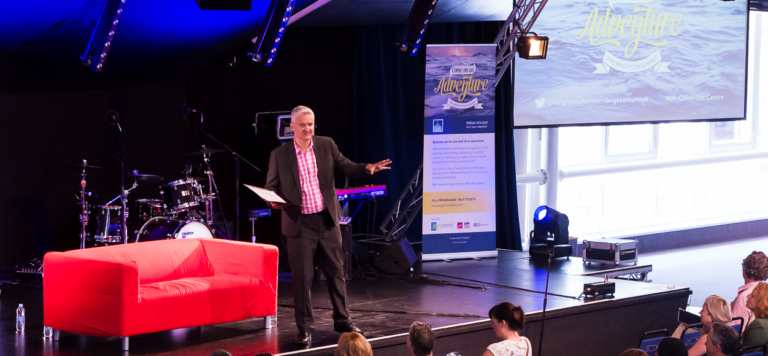16th August 2019
Structuring that tricky bit in the middle of your presentation
As I said in a previous post, not only does your presentation as a whole need a distinct structure, the important central section of content (normally the longest of the three sections) needs its own structure. This will make it easier for your audience to follow and easier to understand, thus making it more effective. It will also make it easier for you to remember and deliver.
One of the most common and probably one of the easiest to use structures is past, present, future. Look at the topic you need to cover and split your content into where we were (past), where we are (present) and where we’re going/where we want to be (future). Most stories follow this chronological structure (although sometimes ‘past’ is told as ‘backstory’ once the story has started) and we’re used to following a thread along a timeline. Try not to jump around in time (leave that to Dr Who), but talk through your topic from beginning to expected or desired end. For example, if you have to deliver sales figures and talk about targets, you could start talking about where the business was this time last year or last month (past), the current situation and figures (present) and then the targets you need to meet (future).
You don’t have to give equal weight to each section of your presentation – it might be that you look briefly at the past to give some context, then move on to look at the present situation in some depth before just glancing ahead into the future.
It’s generally accepted that most people will struggle to remember more than three main points from your presentation. If you don’t believe this, try it. A few days after you’ve given a presentation try surveying a few people who were in the audience. Most will struggle (unless really pushed) to remember more than three things you said, and they may well not be the three things you wanted or expected them to remember. I have a couple of quite dramatic personal stories I used to tell as part of my presentations, but now rarely tell them as I became aware that people were remembering those stories rather than the content and message they were meant to be illustrating.
The three things that people do remember can be revealing too, as they’re often either three incredibly detailed things that clearly resonated with that person, or three very broad topics, which may reflect how you presented the information. We’re remarkably well trained to look for lists of three points and if they’re clear and well presented you’ll find people will write them down, which is always a good sign.
The starting point for using this structure is to ask yourself: ‘If my audience remember three things from this presentation – what do I want them to be?’ and then you build your presentation around them, splitting your content into three main sections to reflect them.

